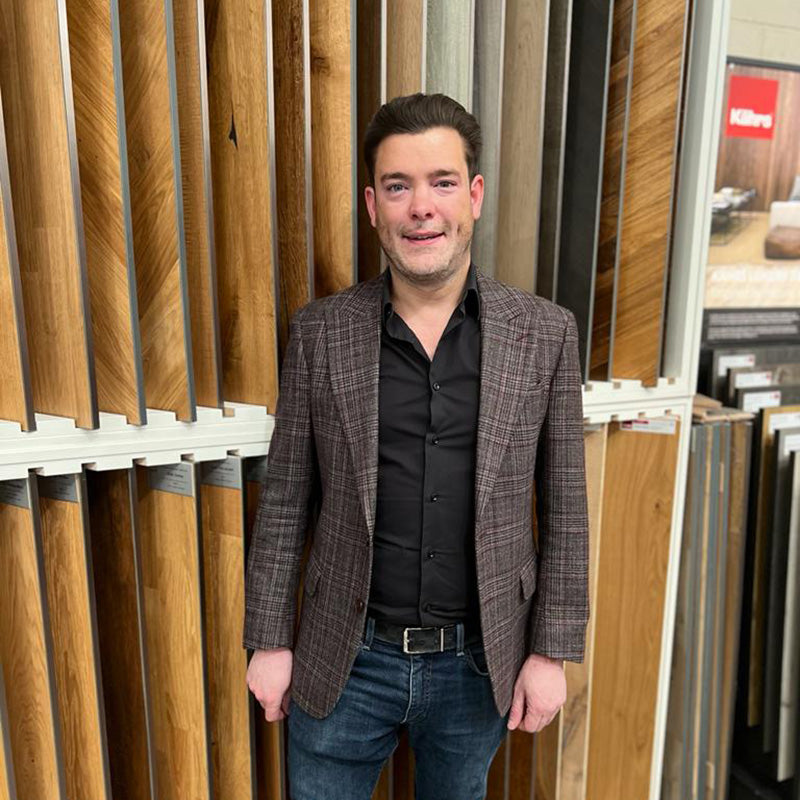If you want to ensure you install your new floor correctly, the first step is to acclimatise it. Discover how to acclimatise your new flooring below
Written by: Yarl ChristiePublished on: March 01, 2020
Why Does New Flooring Need to be Acclimatised?
Quick Links
Why is Acclimatising Wooden Floors Important?
How Should Wood Floors Be Acclimatised?
Acclimatisation is an important part of the installation process. Whether you have purchased a wooden, LVT, laminate, or SPC floor, it will need to be acclimatised before being installed.
So, what is acclimatisation, why is it important, and how do you do it? Discover everything you need to know in this useful guide.
Acclimatising Wooden Flooring
Although all types of flooring need to be acclimatised, it is an especially important process for solid and engineered wood flooring.
Why is Acclimatising Wooden Floors Important?
Whether you purchase a solid wood floor or an engineered wood floor, they will always need to be acclimatised. This means, leaving them for a set period of time to help them adjust to room temperature.
As wood is a natural material, it adjusts to its environment. This means, its shape will alter depending on the temperature and humidity of the room. You’ll want to ensure the floor is done expanding or contracting before you fit it. If you don’t, you could end up with gaps in the floor, or the boards could become cupped. Fixing these issues can cost a fortune, plus it’s not going to look great. So, acclimatising the floor is crucial if you want to achieve the best results and avoid damage to the planks.
How Should Wood Floors Be Acclimatised?
You will find that engineered wood and solid wood flooring have their own guidelines regarding how long they should be left before being installed. The manufacturer will usually provide instructions for how long the floor should be left in the room before installation. There are, however, a few general guidelines you can follow.

Firstly, you will want to make sure you stack the floor packs in the room it is going to be installed. Each room of the home will have an entirely different temperature and humidity level. So, if you leave it in the conservatory for example, but you’re installing it in the lounge, the planks are likely to warp and expand or contract once they’re installed.
Generally speaking, solid and engineered wood floors typically need to be acclimatised for a period of 72 hours.
How Do You Acclimatise LVT and SPC Flooring?
Although LVT and SPC flooring isn’t made from wood, it can still potentially warp if it isn’t properly acclimatised. Unlike solid wood and engineered flooring, they only need to be acclimatised for a period of around 24-48 hours.
The layers inside the floors are porous, which means air can travel inside, causing them to change shape and alter the size of the planks. This is why they need to be acclimatised before being fitted. If you skip this crucial step, the floor could either buckle or contract and leave behind unsightly gaps.
LVT and SPC floor tiles must be left in their box during the acclimatisation phase, in the room they will be installed. This ensures when you are ready to install them, it will be a smooth and problem-free process.
How Do You Acclimatise Laminate Flooring?
Laminate flooring may not be made from real wood, but manufacturers recommend acclimatising them for up to 48 hours before installation. Like other types of flooring, laminate can contract or expand after it has been fitted.
The room temperature during acclimatisation should be between 16 and 25 degrees Celsius. Humidity levels should also read between 35% to 65%.
Keep the laminate flooring in its packaging while it is acclimatising, leaving a small gap between each pack. They should be placed flat on the floor where they will be installed.
Regardless of which type of floor you purchase, acclimatisation will help to ensure it doesn’t warp or damage after installation. If you plan on installing your new floor with underfloor heating, you’ll also need to run the heating system for up to 48 hours on a comfortable temperature.



